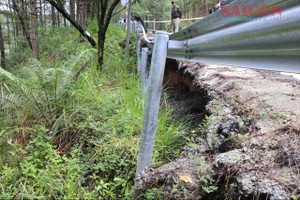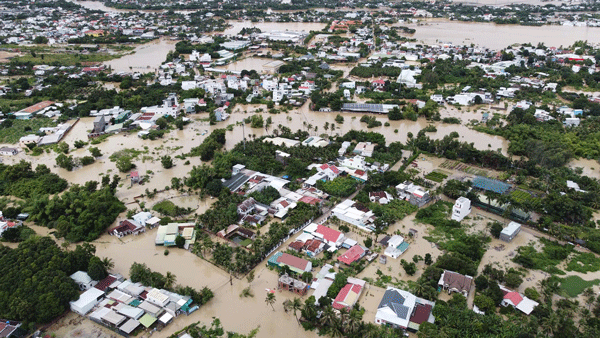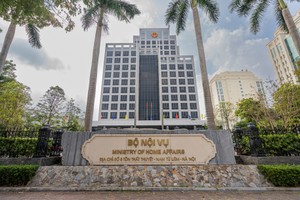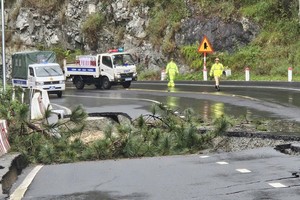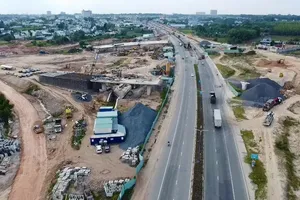
Hai Duong Province currently spans over 1,670km², situated at the heart of the Northern Key Economic Region and along the vital Hanoi – Hai Phong – Quang Ninh economic corridor.
It serves as a gateway connecting the capital, Hanoi, with the major seaport of Hai Phong and the northeastern region. The province is strategically positioned to become a modern industrial powerhouse and a dynamic industrial center for the Red River Delta.
Meanwhile, Hai Phong City, with an area of over 1,526km² and a population exceeding 2.4 million, is a class-I national urban center. Located about 100km from Hanoi, it forms one of the three critical vertices of the Hanoi – Hai Phong – Quang Ninh growth triangle.
Belonging to the important road axis connecting Hanoi with the provinces of Hung Yen, Hai Duong, and Quang Ninh, Hai Phong is recognized as a major national economic hub, a center for the seaport industry and logistics, and a key regional base for science, technology, research, and training.
Geographically and economically, the two localities are primed for integration. They are adjacent, share the flat, lowland terrain of the Red River Delta ideal for industry and agriculture, and possess similar economic structures where industry, construction, and services account for over 74 percent of the economy.
With an average per capita income of over VND63 million (US$2,500) per year and well-connected infrastructure, their merger promises to significantly expand the new city’s development horizons.
According to Hai Phong City Party Committee Secretary Le Tien Chau, the city is determined to unlock all resources to drive economic growth. This will be achieved by restructuring the economy with a focus on science, technology, innovation, and digital and green transformations as primary drivers. The vision includes creating modern and transparent institutions, supporting private enterprise, and building a formidable business community.
This will be complemented by the continued development of strategic infrastructure – seaports, airports, and high-speed rail – to establish the city as the nation’s foremost hub for industry, logistics, and maritime trade.
In a recent speech at the 70th anniversary of the Liberation Day of Hai Phong City, State President Luong Cuong emphasized that the city has a tremendous opportunity to become a national leader in industrialization and modernization, on par with prominent cities across Asia.
He urged the city’s leadership and people to build upon their achievements, unite, and seize every opportunity to overcome challenges. The President specifically advised proactive planning to expand development space towards a modern, green, and sea-oriented urban model, transforming riverside areas into sustainable economic and service zones.

The merger is expected to significantly leverage Hai Phong City’s transport advantages, creating powerful development opportunities for the entire region. Major ongoing and upcoming transportation projects are set to deliver a breakthrough.
Deputy Minister of Construction Nguyen Danh Huy highlighted that Hai Phong City possesses a full suite of transport modes, namely maritime, aviation, rail, and road. Its seaport, the largest in the North, already serves 14 international shipping routes. A new master plan under review for the 2021-2030 period, with a vision to 2050, aims to dramatically upgrade the port system to handle 175-215 million tonnes of cargo and over 20,000 passenger arrivals annually.
Furthermore, the Lao Cai – Hanoi – Hai Phong railway project, with a total investment of VND203 trillion ($8 billion), is being prepared for a mid-December start. The merger will enable more synchronized and efficient management of existing infrastructure, such as the Hanoi – Hai Phong Expressway, reducing investment duplication.
National Highways 5 and 10 will benefit from better traffic flow and more streamlined upgrades. The synergy between Hai Duong Province’s industrial land and Hai Phong City’s multimodal transport hub will create seamless connectivity for industrial zones, cut logistics costs, and boost import-export capacity.
Chairman Tran Ngoc Chinh of the Vietnam Urban Planning and Development Association noted that the merger will facilitate continuous cross-regional transport corridors, unconstrained by old administrative borders. He envisions the Hai Duong – An Duong – Hong Bang route becoming a continuous urban-industrial axis and expanded bus networks more effectively connecting urban centers with satellite areas. This larger, merged urban region will also be more attractive for large-scale BOT and PPP infrastructure projects.
Director Nguyen Ngoc Tu of Hai Phong City Department of Finance commented that his department has proposed a plan to restructure the city into a polycentric urban-industrial-service model to drive growth post-merger. This involves developing strategic infrastructure, including major seaports, an international airport, and high-speed rail.
A comprehensive logistics and digital network will underpin the new digital economy, boosting opportunities to attract investment. The department will also analyze the Provincial Competitiveness Index (PCI) for both localities to identify weaknesses and propose strategies to improve the new city’s national ranking in the coming years.
According to Dr Nguyen Si Dung, the merger of provinces is not merely an administrative reform; it is a powerful lever to create administrative units with the scale and scope necessary for modern development and connectivity.
This is the essential precondition for forming new growth poles on the nation’s development map. These new, larger localities will create a seamless development space connecting the urban core with coastal, delta, and mountainous regions, thereby fully integrating the value chain of production, logistics, consumption, and export.
The conditions for action have now converged. Politically, Resolution 60-NQ/TW has provided a clear direction against maintaining weak, dependent provinces. Legally, the National Assembly is finalizing its decision. Public and business consensus has matured. If there is no action now, this historic opportunity will pass, and the country will remain constrained by an administrative design that no longer suits the new development stature.
